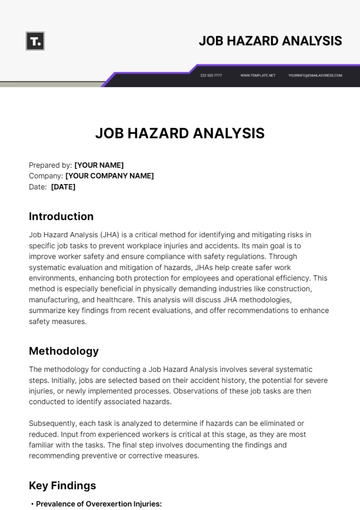Free Financial Risk Management Analysis

I. Introduction
In the dynamic landscape of modern business, navigating financial risks is integral to sustaining organizational resilience and ensuring long-term success. This analysis delves into the intricate framework of financial risk management practices, aiming to dissect and evaluate strategies in identifying, assessing, and mitigating potential risks in our company. The analysis explores not only the current compliance with regulatory frameworks but also adaptability in the face of evolving market conditions. By scrutinizing tailored risk mitigation strategies, ongoing monitoring processes, and the overall contribution of financial risk management to decision-making, this analysis seeks to provide actionable insights for fortifying financial health and optimizing returns. Through this analysis, we aim to unravel the intricate tapestry of the company’s financial risk management, offering strategic recommendations for future enhancements tailored to the specific needs and challenges faced by organizations in this ever-evolving landscape.
II. Identification of Risks
A. Market Dynamics
The company exhibits exposure to fluctuations in market conditions, making its performance sensitive to changes in demand, supply, and overall economic trends. This vulnerability is rooted in the interconnected nature of the company's operations with broader market dynamics, making it imperative to closely monitor external economic factors.
B. Credit Fluctuations
Credit risks arise from the potential for customer defaults or delayed payments, impacting the company's cash flow and overall financial stability. This is influenced by the diverse creditworthiness of customers and the inherent uncertainty in predicting payment behaviors, necessitating a vigilant credit risk management approach.
C. Interest Rate Changes
The company's susceptibility to interest rate fluctuations stems from the impact on borrowing costs, influencing its profitability. Interest rate changes are an external factor beyond the company's control, affecting financial performance and emphasizing the need for strategic financial planning to mitigate adverse effects.
D. Currency Risks
Exposure to currency risks is identified, particularly in international operations or transactions. Fluctuations in exchange rates can impact revenues and expenses, with the cause rooted in the global nature of business activities, making effective hedging strategies essential to manage currency-related risks.
III. Risk Assessment Methodologies
A. Quantitative Analysis
The company relies on quantitative methods, including statistical models and financial metrics, to assess the potential impact of financial risks. This data-driven approach is driven by the need for a precise understanding of risk exposure, enabling informed decision-making based on numerical assessments.
B. Qualitative Analysis
Qualitative analysis, such as scenario analysis and expert judgment, complements quantitative assessments. This holistic approach is necessitated by the nuanced nature of risks that may not be fully captured through quantitative measures alone, ensuring a comprehensive understanding of the likelihood and severity of identified risks.
C. Risk Prioritization
The company prioritizes risks based on a combination of their potential impact and the probability of occurrence. This prioritization is driven by the need to allocate resources efficiently to address the most significant and likely risks, acknowledging that not all risks are of equal importance in the context of the company's objectives and operations.
D. Risk Mapping
Utilizing risk mapping techniques, the company visually represents the interconnectivity and dependencies of various risks. This visual aid is employed to enhance the organization's understanding of the risk landscape, facilitating effective communication and decision-making.
IV. Tailored Risk Mitigation Strategies
A. Market Dynamics
The company has implemented tailored strategies to navigate fluctuations in market conditions. These strategies involve agile business models, allowing swift adjustments to changing demand and supply dynamics. The focus is on adaptability and innovation to proactively respond to evolving market trends.
B. Credit Fluctuations
Addressing credit risks, the company has adopted customized mitigation strategies. This includes stringent credit control measures, comprehensive credit risk assessments, and the utilization of credit insurance to mitigate potential losses. These tailored approaches aim to enhance the company's resilience against credit-related challenges.
C. Interest Rate Changes
Tailored strategies are in place to manage the impact of interest rate fluctuations. The company employs a mix of fixed and variable-rate financing, along with interest rate hedging instruments. This approach provides flexibility and a degree of predictability in managing borrowing costs amidst changing interest rate environments.
D. Currency Risks
The company has implemented specific mitigation strategies to address currency risks associated with international operations. This involves the use of currency hedging instruments, strategic currency diversification, and operational adjustments to minimize the impact of exchange rate fluctuations. These tailored approaches aim to safeguard the company's financial stability in the global market.
V. Ongoing Monitoring and Review Process
A. Continuous Monitoring
The company has established a robust system for continuous monitoring of the financial environment. Regular market analyses, real-time data tracking, and automated alert systems are in place to ensure timely identification of emerging risks. This continuous monitoring allows for proactive decision-making in response to dynamic market conditions.
B. Regular Reviews
Regular reviews of risk management strategies are conducted to assess their effectiveness and relevance. These reviews involve periodic stress testing, scenario analysis, and benchmarking against industry best practices. The iterative nature of these reviews ensures that risk management strategies remain aligned with the company's evolving risk profile.
C. Adaptability and Flexibility
The company emphasizes adaptability and flexibility in its monitoring and review processes. This involves the ability to swiftly adjust risk management strategies based on the findings of ongoing reviews. The goal is to maintain a dynamic and responsive approach to risk management, ensuring that strategies remain effective in the face of changing market dynamics.
D. Communication and Reporting
Effective communication and reporting mechanisms are integral to the ongoing monitoring process. The company ensures transparent communication of risk insights across relevant stakeholders, fostering a risk-aware culture. Regular reporting mechanisms provide key decision-makers with up-to-date information, facilitating timely and informed risk management decisions.
VI. Safeguarding Financial Health
A. Resilience Against Market Dynamics
The company's proactive approach to safeguarding financial health involves building resilience against market dynamics. This includes maintaining a robust cash reserve, diversifying product portfolios, and implementing strategic partnerships to mitigate the impact of market fluctuations on overall financial stability.
B. Strengthening Credit Position
To safeguard against credit fluctuations, the company focuses on strengthening its credit position. This involves rigorous credit risk assessment processes, fostering long-term relationships with reliable customers, and implementing dynamic credit limit management to minimize the adverse effects of potential defaults.
C. Optimizing Financing Structures
The company safeguards against the impact of interest rate changes by optimizing its financing structures. This includes a judicious mix of fixed and variable-rate financing, renegotiating loan terms during favorable market conditions, and utilizing interest rate hedging strategies. These measures enhance the company's ability to withstand interest rate volatility.
D. Global Risk Management for Currency Exposure
Safeguarding against currency risks on the global stage involves a comprehensive risk management approach. This includes strategic currency diversification, utilizing currency hedging instruments, and closely aligning pricing strategies with local market conditions. These measures collectively enhance the company's resilience to currency fluctuations.
VII. Contribution to Decision-Making
A. Informed Strategic Planning
Financial risk management significantly contributes to informed strategic planning within the company. The insights gained from risk assessments influence key decision-makers in developing strategies that align with the identified risks and opportunities, ensuring a more nuanced and forward-looking approach to business planning.
B. Resource Allocation Alignment
The integration of financial risk management into decision-making processes ensures alignment in resource allocation. The company allocates resources based on the prioritized risks, directing investments, and efforts towards areas identified as critical in maintaining financial health and optimizing returns.
C. Balancing Risk and Reward
Financial risk management plays a pivotal role in balancing risk and reward. Decision-makers consider the risk-return profile of various initiatives, ensuring that the pursuit of opportunities aligns with the company's risk tolerance. This approach supports a more sustainable and balanced approach to decision-making in the company.
VIII. Optimizing Returns through Risk Management
A. Strategic Investment Decisions
The company optimizes returns through strategic investment decisions guided by a thorough understanding of financial risks. By factoring in risk considerations, the company identifies investment opportunities with favorable risk-return profiles, ensuring that capital is deployed efficiently to maximize returns while managing potential downsides.
B. Dynamic Portfolio Management
Optimizing returns involves dynamic portfolio management that responds to changing risk landscapes. The company actively rebalances its portfolio, adjusting asset allocations based on evolving risk factors and market conditions. This dynamic approach allows for the capitalization of emerging opportunities and the mitigation of potential risks.
C. Innovative Financial Instruments
The company explores innovative financial instruments as part of its strategy to optimize returns. This may include leveraging derivatives, structured products, or alternative investments to enhance the risk-adjusted returns of the portfolio. By embracing innovation, the company seeks to generate additional value from its financial assets.
D. Performance Benchmarking
Optimizing returns is reinforced by rigorous performance benchmarking against industry standards and peer comparisons. The company evaluates the effectiveness of its investment strategies by comparing performance metrics, ensuring that its financial risk management practices consistently contribute to achieving competitive returns.
IX. Compliance and Governance in Risk Management
The table below provides an overview of the company's compliance status with specific regulations related to financial risk management:
Regulation | Compliance Status |
Dodd-Frank Act | [Compliant] |
Ensuring compliance with regulatory requirements is paramount for the company to uphold robust governance practices in financial risk management. Our company has established robust risk management protocols in alignment with Dodd-Frank Act requirements. This encompasses practices related to derivatives trading, risk disclosure, and overall risk assessment processes. The analysis indicates a positive compliance status showcasing the company's commitment to regulatory adherence in most areas of financial risk management.
X. Role of Risk Management in Decision-Making
A. Strategic Alignment with Business Objectives
Financial risk management plays a crucial role in aligning strategic decisions with overall business objectives. The integration of risk considerations into decision-making ensures that the company's initiatives are in harmony with its broader goals, fostering sustainable growth and value creation.
B. Scenario-Based Decision Support
The role of financial risk management extends to providing scenario-based decision support. Decision-makers leverage risk scenarios to simulate potential outcomes and assess the impact on financial performance. This proactive approach empowers the company to make informed decisions that account for a range of possible future developments.
C. Capital Allocation Efficiency
Decision-makers use risk insights to prioritize capital allocation, directing resources towards initiatives that offer the optimal balance between risk and reward. This ensures that capital is deployed in a manner that maximizes value for stakeholders.
D. Enhanced Contingency Planning
Financial risk management enhances contingency planning within the decision-making process. By identifying potential risks and developing contingency plans, the company is better prepared to navigate unforeseen challenges, minimizing the impact of adverse events on financial performance and maintaining overall resilience.
XI. Recommendations
Building upon the insights gained from the analysis, the following recommendations are proposed to enhance financial risk management practices and foster sustained resilience:
A. Strategic Alignment with Regulatory Changes
Proactively align risk management practices with the specific requirements of this regulation. Regularly monitor updates and changes to regulatory frameworks, ensuring timely adjustments to maintain compliance.
B. Enhanced Data Analytics Capabilities
Strengthen data analytics capabilities to bolster risk assessment methodologies. Investing in advanced analytics tools will enable the organization to extract actionable insights from large datasets, enhancing the accuracy and effectiveness of risk assessments.
C. Scenario-Based Stress Testing
Integrate scenario-based stress testing into the risk assessment process. This proactive approach will provide a comprehensive understanding of potential impacts under various adverse scenarios, enabling the organization to fortify its risk mitigation strategies.
D. Diversification of Currency Risk Management
In response to the identified exposure to currency risks, consider diversifying currency risk management strategies. Explore a broader range of hedging instruments and implement innovative approaches.
E. Regular Training and Awareness Programs
Conduct regular training and awareness programs for employees across departments to ensure a consistent understanding of compliance requirements and risk management protocols. A well-informed workforce is crucial for maintaining a culture of compliance within the organization.
F. Agile Response Mechanisms
Establish agile response mechanisms within the ongoing monitoring and review processes. This involves developing contingency plans that can be swiftly activated in response to emerging risks, ensuring the organization remains adaptive and resilient in dynamic market conditions.
G. Continuous Improvement Framework
Implement a continuous improvement framework for financial risk management practices. This involves regular reviews of existing strategies, benchmarking against industry best practices, and incorporating lessons learned from past experiences to drive ongoing enhancements.
H. External Collaboration and Industry Partnerships
Foster external collaboration and industry partnerships to stay abreast of emerging trends and regulatory changes. Engaging with industry forums and regulatory bodies will provide the organization with valuable insights, enabling proactive adjustments to risk management strategies.
- 100% Customizable, free editor
- Access 1 Million+ Templates, photo’s & graphics
- Download or share as a template
- Click and replace photos, graphics, text, backgrounds
- Resize, crop, AI write & more
- Access advanced editor
Risk analysis simplified with Template.net's editable Financial Risk Management Analysis Template! This customizable analysis ensures a dynamic and intuitive approach. Tailor it precisely to your management needs, guaranteeing efficiency and precision. Your ally in risk analysis is just a click away! Seamlessly edit now using the user-friendly AI Editor Tool!





























